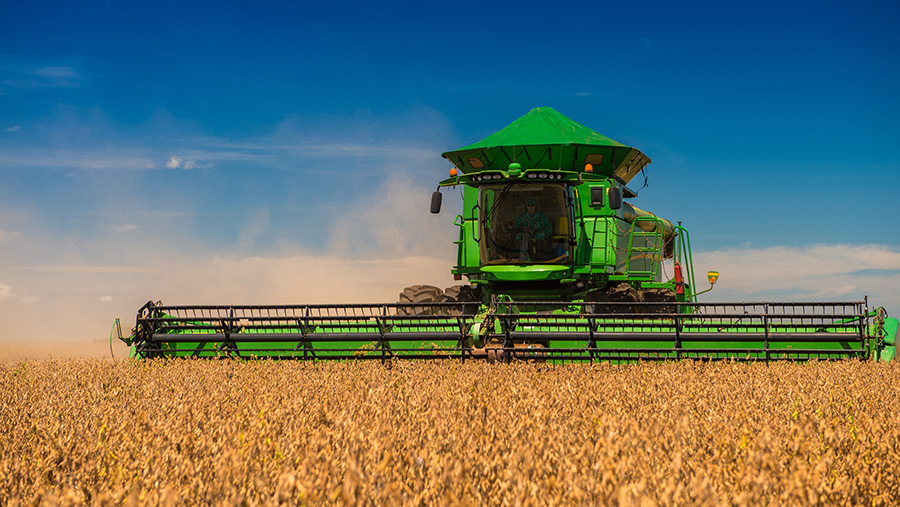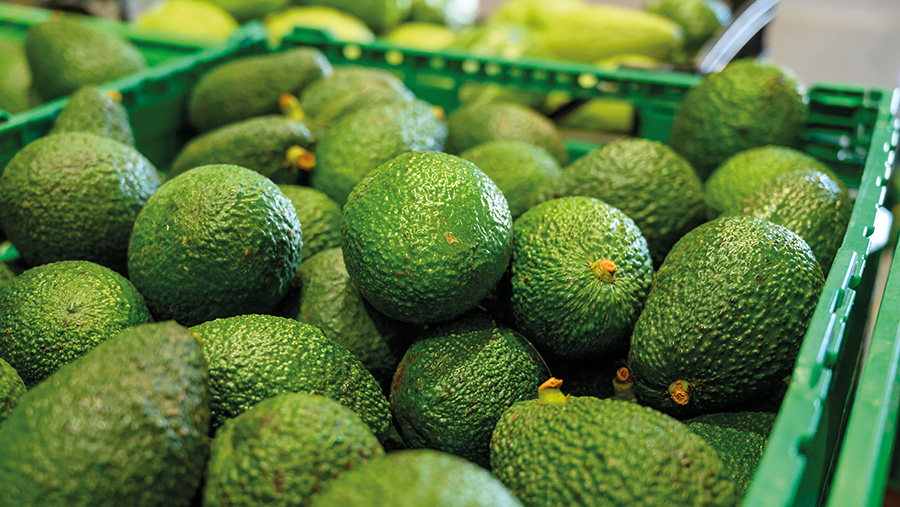Global farmland prices rise as demand for land grows
 Harvesting soya beans in Brazil © Lourenco Furtado/Adobe Stock
Harvesting soya beans in Brazil © Lourenco Furtado/Adobe Stock Markets around the world are seeing similar competing interests for farmland as those in the UK, with policy and economic changes influencing some big price movements.
Biodiversity and climate change mitigation, along with water, energy and tree planting demands are all in the mix.
See also: Farmland market – supply, demand, influences and values
Savills’ global farmland index, which tracks values, recorded a rise of 3.3% overall in 2022, far lower than the 19.5% increase of the previous year.
The 2022 average masks some remarkable changes, including Brazil topping the table at 45.2% value growth.
This was due primarily to the country’s currency, the real, being extremely weak, having devalued against the US dollar by about 30% in the three years to December 2022.
This brought in foreign investors and cash, pushing up demand and values. At the same time, interest rates were low and commodity prices, especially soya beans, were high.
Australia
The volume of land for sale in Australia fell by 37.5%, according to agent Elders Real Estate, pushing up values by 10.9%.
US land values saw a 14.3% rise in 2022, a year that saw the US dollar appreciate by more than 12%.
The 20 years since 2002 have seen the index record 10% compound annual growth, says Savills’ Global Farmland Index report.
Traditional farmland investment factors such as security, long-term growth and tax reliefs are expected to lead to continued value growth, added to by environmental factors and food security demands for more food to be produced from less land.
Solar competition
Global generation capacity from solar installations is predicted to take over from that of coal-fired plants as soon as 2027. The world’s largest solar park, in the United Arab Emirates, covers 19,000 acres.
Policies in terms of land use for this purpose vary, with China having recently announced that new solar developments should not be built on farmland, grassland or protected forest land, while Germany will allow them on CAP biodiversity sites.
Biodiversity
More than 100 countries have biodiversity compensation policies in place, says the report, however, evaluation and monitoring is lacking in many cases.
One example is Australia, where around 90% of sites are said to be falling short of their obligations in the run up to the planned launch of a national biodiversity market in 2024.
Food production area
The global area of arable and grassland used for food and feed production has remained remarkably stable since the 1960s, points out the report, as intensification has coped with the increased demand.
However, as rising wealth in many countries increases the average daily calorie intake, it has been estimated that by 2100, the world will need 120% more water, 42% more cropland and will lose 14% more forest.
This scenario would produce 77% more greenhouse gas emissions.
Spain – investment opportunities

Spanish avocados © Barmalini/Adobe Stock
The report highlights Spain for potential investment in farmland, with yields of between 7% and 12% depending on the land, cropping and whether operational risk is taken in the farming activity by the investor.
A leading producer of many of the key fruits, tree nuts and vegetables, it is identified in the report as having an unparalleled environment for the agricultural sector to thrive.
Cash yields for farming assets continues to increase and large-scale properties coming on to the market.
Production and conditions are, however, very different around the regions.
Potential challenges include pressure on water supply from the mountains in future, which can be addressed in a variety of ways.
On the other hand, the climate in southern Spain is such that polytunnels and glasshouses do not need heating.
Outdoors, lower rainfall can be both a challenge as well as bringing benefits, such as less disease pressure on sensitive high-value crops.
Land prices are less significant than in many other regions, says the report, mainly because the setups are reliant to a significant degree on depreciating assets associated with production systems, for example trees, irrigation systems and glasshouses or tunnels.
